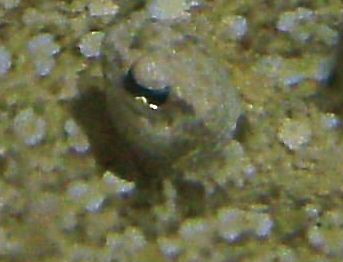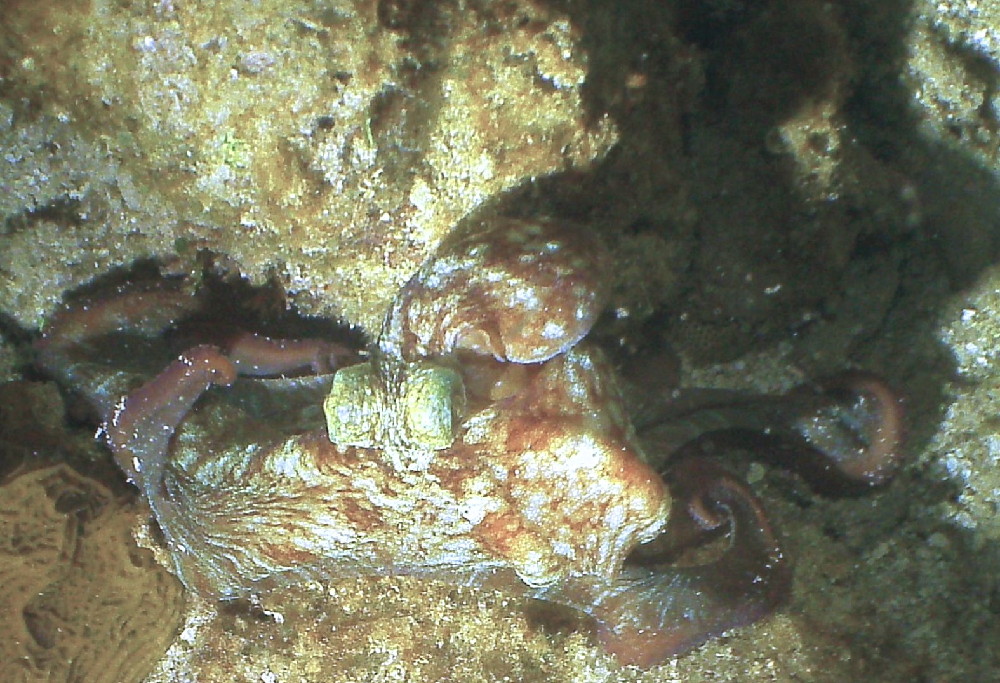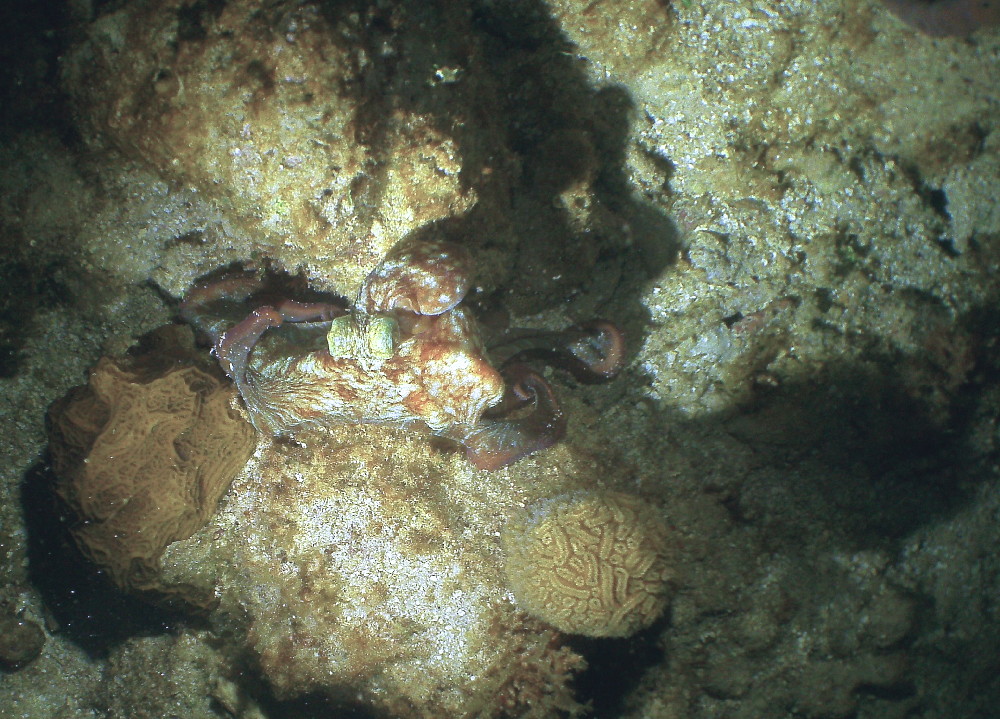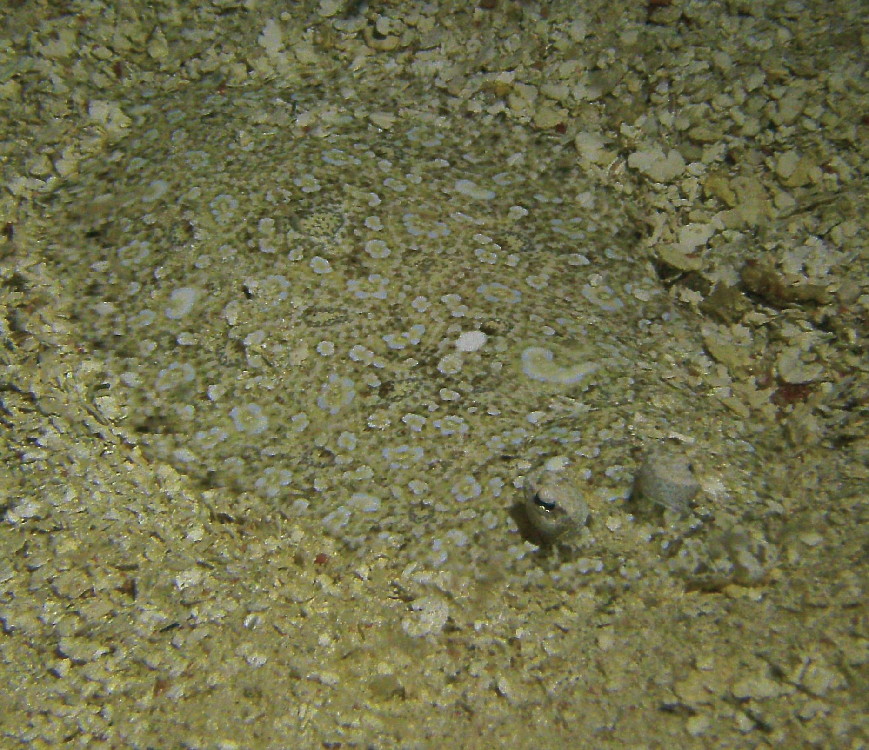
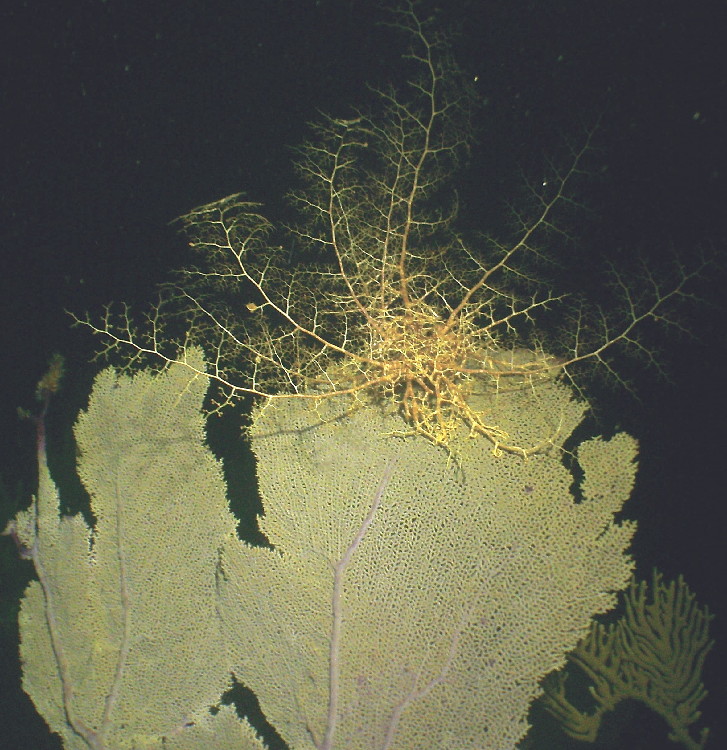
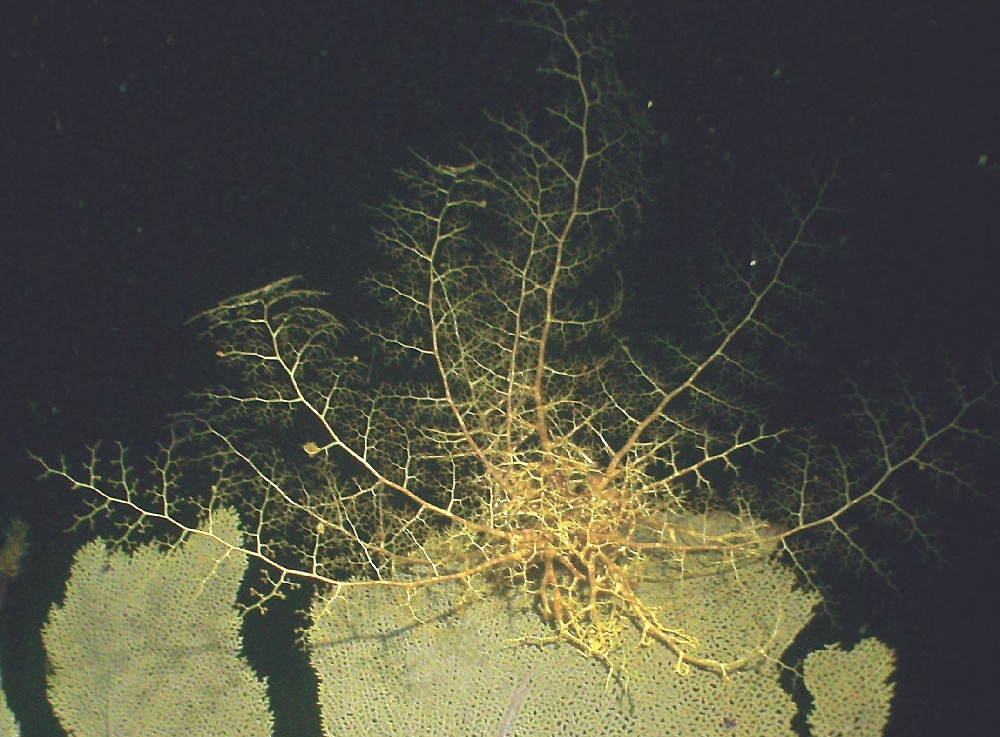
Basket star (also known as Giant Basket Stars, Brittle Sea Stars,
Starfish, Caribbean Basket Starfish and Basket Fish.
Found on reefs, coiled during the day often attached to
gorgonians, sponges or dark recesses in the reef.
At night (as in this photograph), they spread their arms
to face the current to feed on planktonic animals.
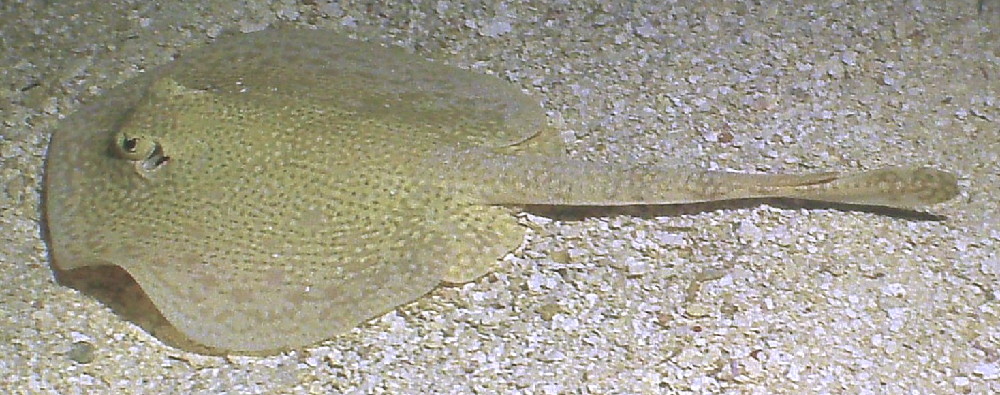
The yellow stingray (Urobatis jamaicensis)
is a species of stingray found in the tropical western
Atlantic Ocean from North Carolina to Trinidad.
This bottom-dwelling species inhabits sandy, muddy,
or seagrass bottoms in shallow inshore waters,
commonly near coral reefs.
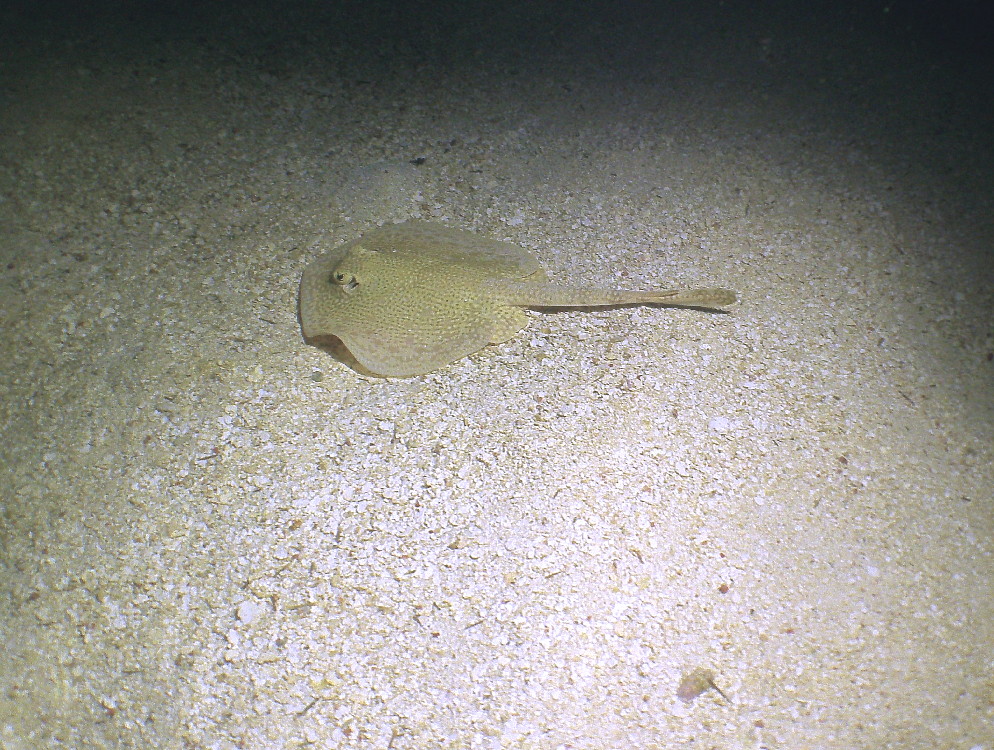
Relatively sedentary during the day,
the yellow stingray feeds on small invertebrates and bony fishes.
When hunting it may undulate its disc to uncover buried prey,
or lift the front of its disc to form a "cave"
attractive to shelter-seeking organisms.
Though innocuous towards humans,
the yellow stingray can inflict a painful injury with its venomous tail spine.
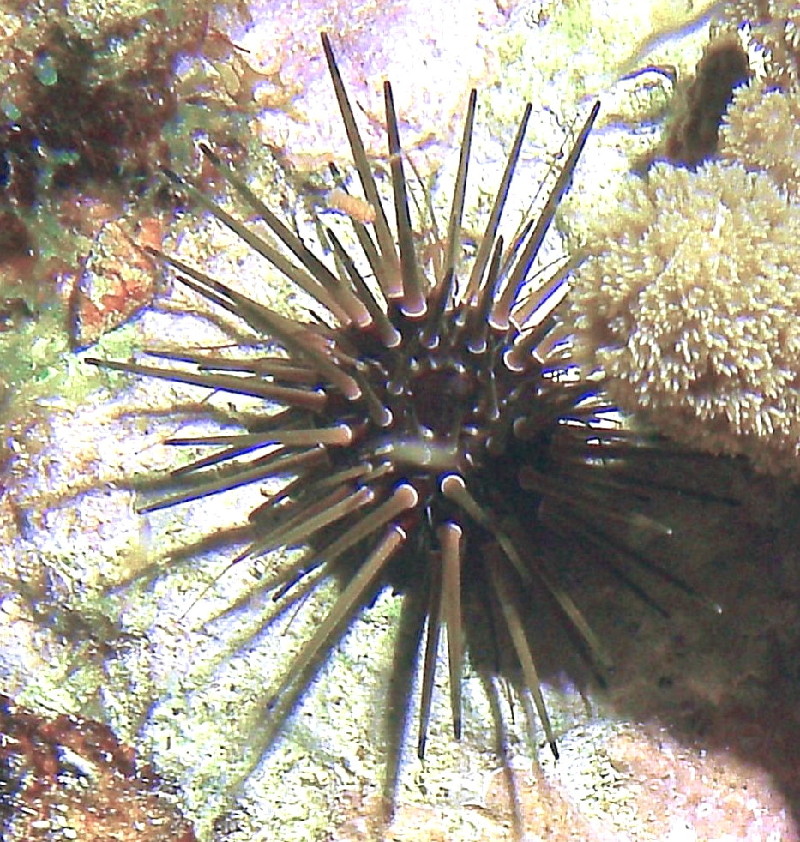
Pencil Urchin (Eucidaris tribuloides) also known
as the Mine or Club Urchin. It has a brown,
sometimes mottled body with stubby, thick spines
radiating out in all directions. Never try to pry it out of a hole,
as you will break its spines before it lets go. As it ages,
its spines may become covered with coralline and other types of algae.
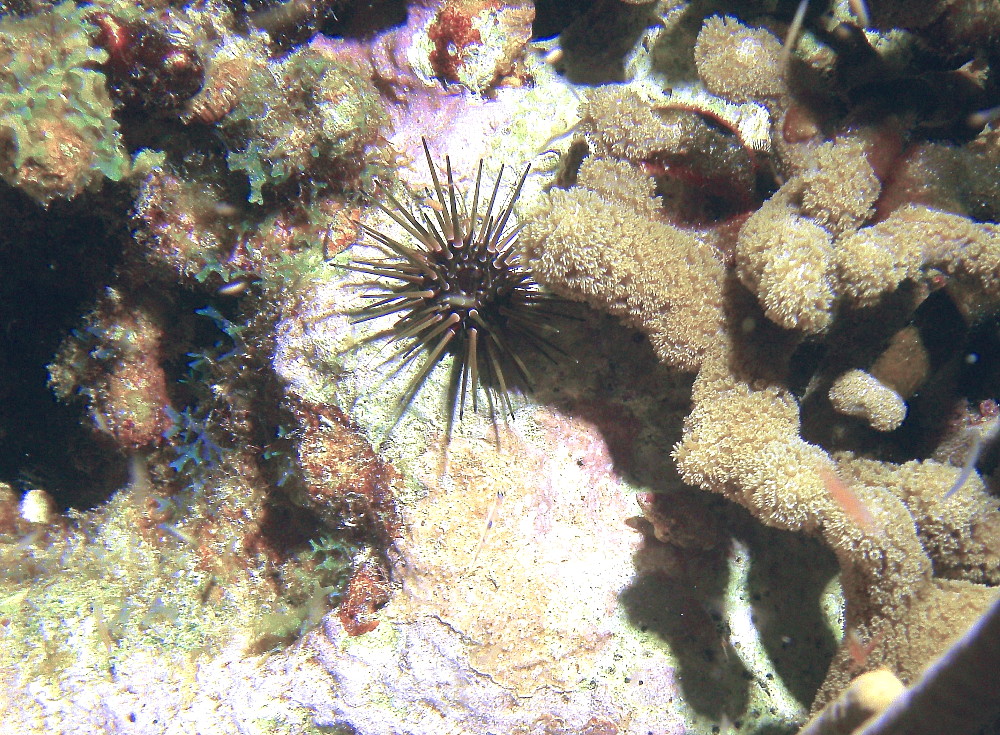
During the day it will seek shelter in the rocks;
at night it will come out and forage for food (as I found this one),
looking particularly for algae lawns and
smaller invertebrates like sea squirts or sponges
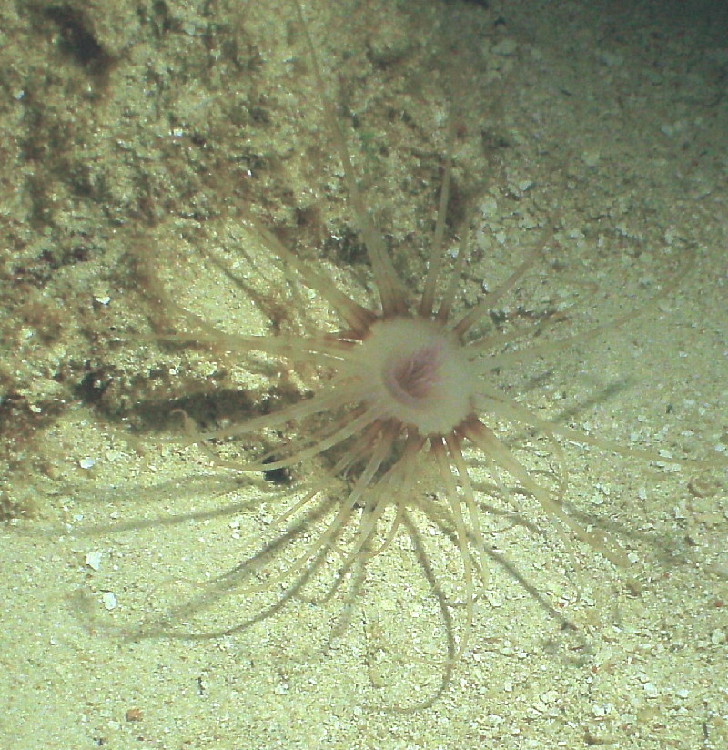
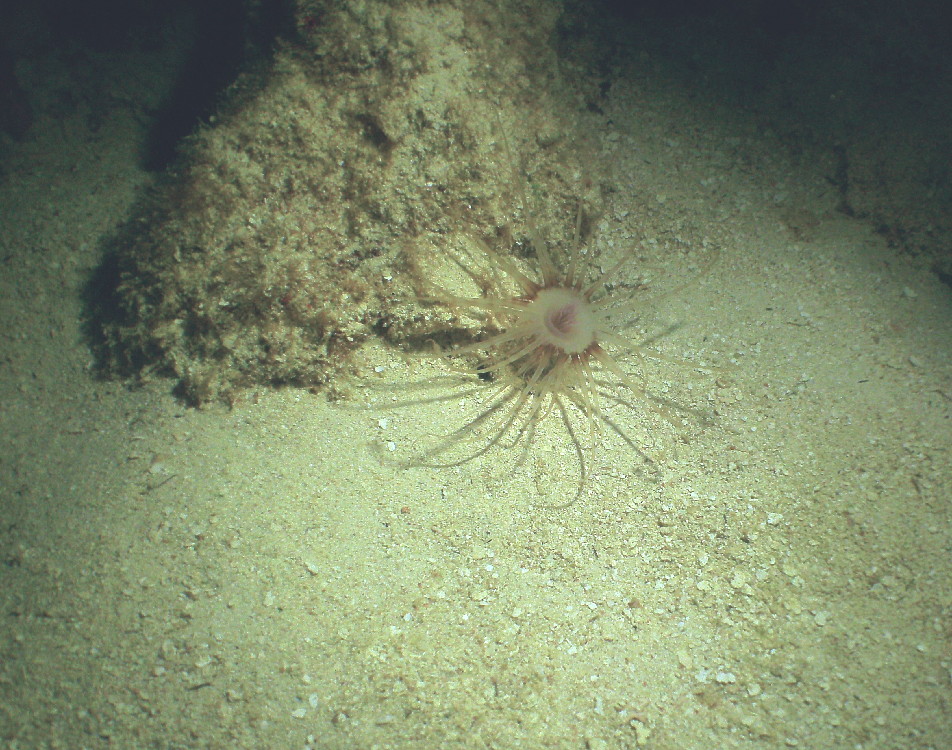
Feather duster (Sabellastarte sp.) is a tube worm that
has a fan-shaped crown (radiole).
The radiole of some species from certain locales
may be up to seven inches in diameter, or of brighter colors.
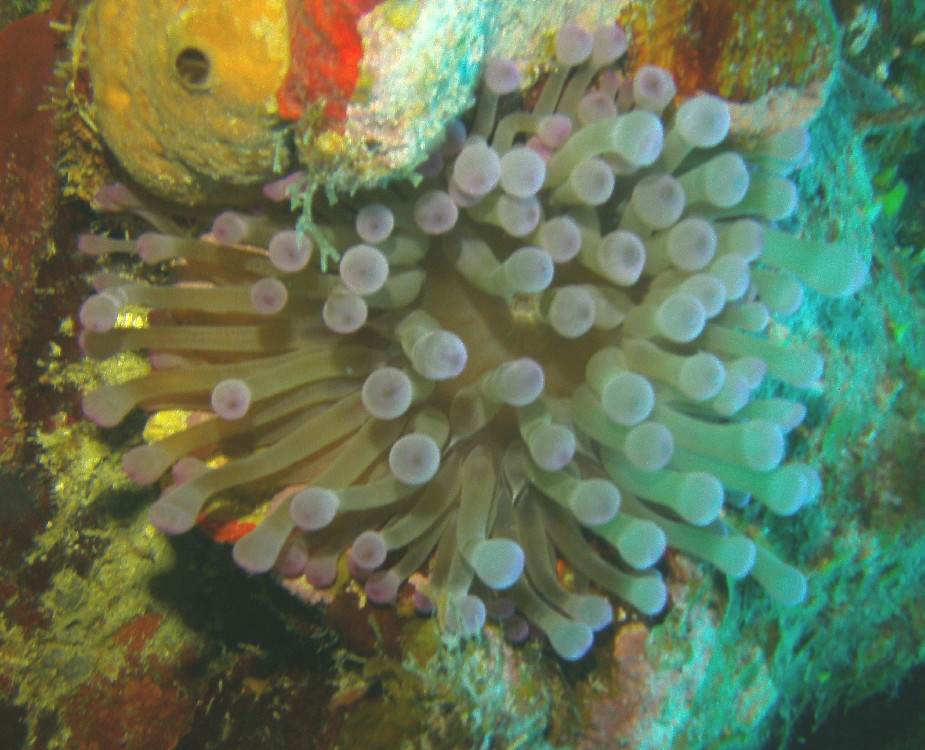
Giant Caribbean sea anemone
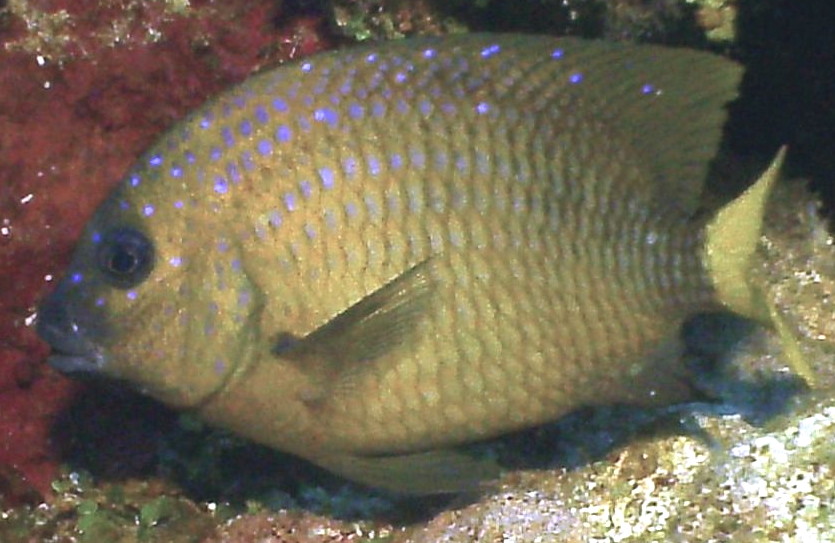
Yellowtail damselfish (Microspathodon chrysurus) is a damselfish from the Western Atlantic which occasionally makes its way into the aquarium trade.
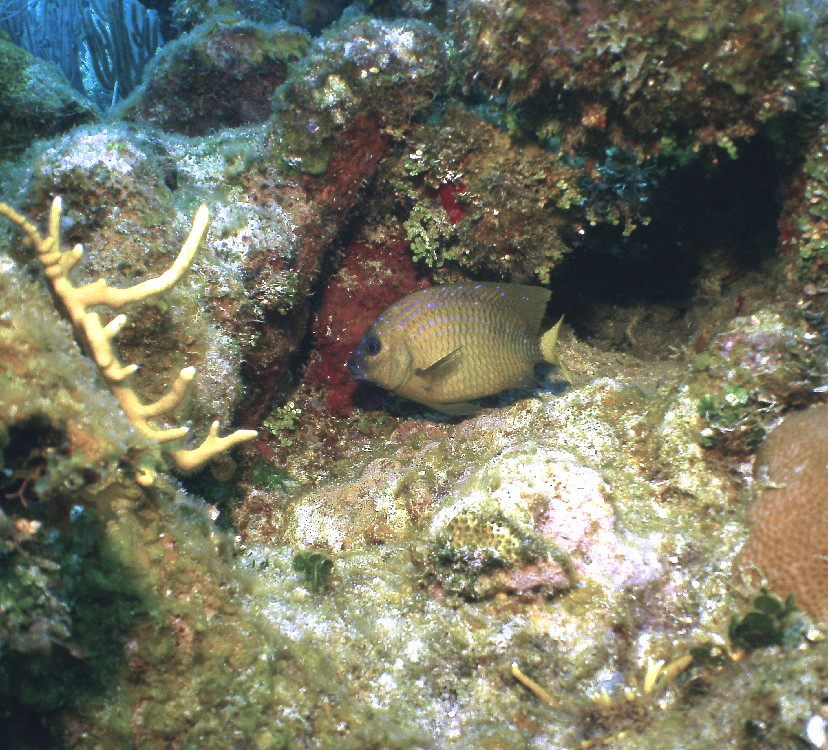
It is probably the most aggressive of all damselfish.
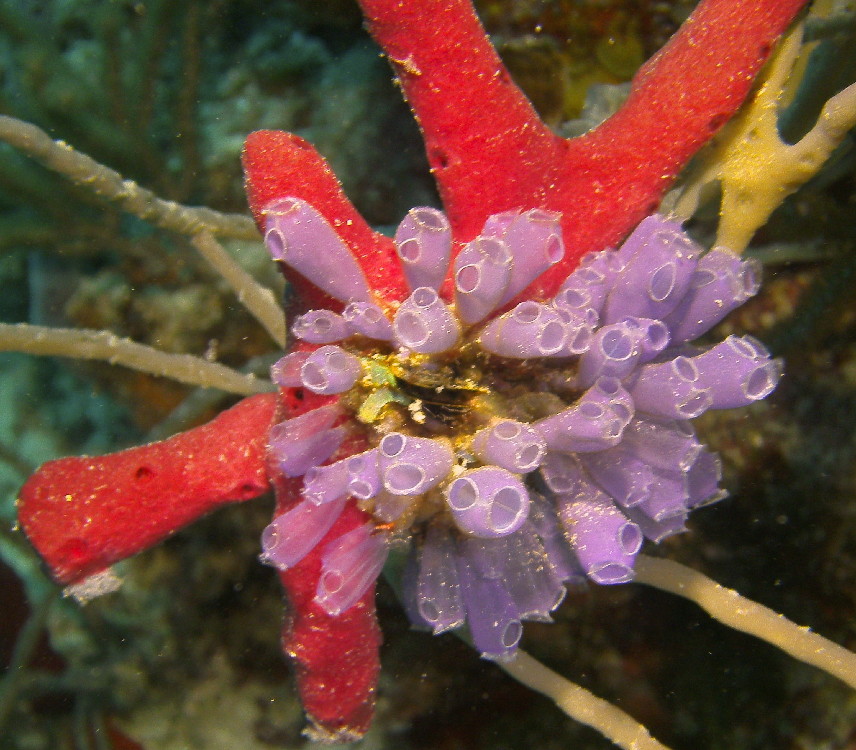
Unknown tube sponge; aren't the colors wonderful?
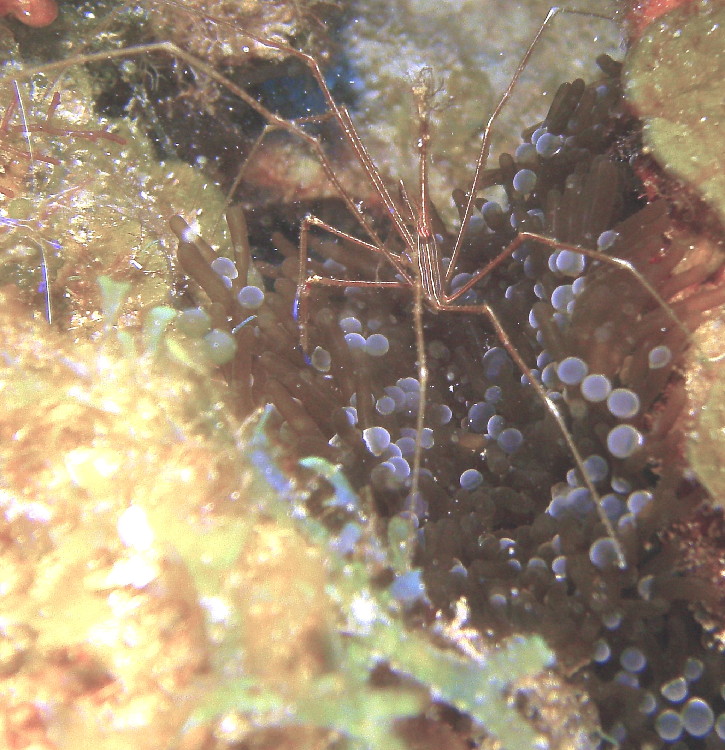
If you look closely at this arrow crab,
it's found protection from a small giant Caribbean anemone . . .
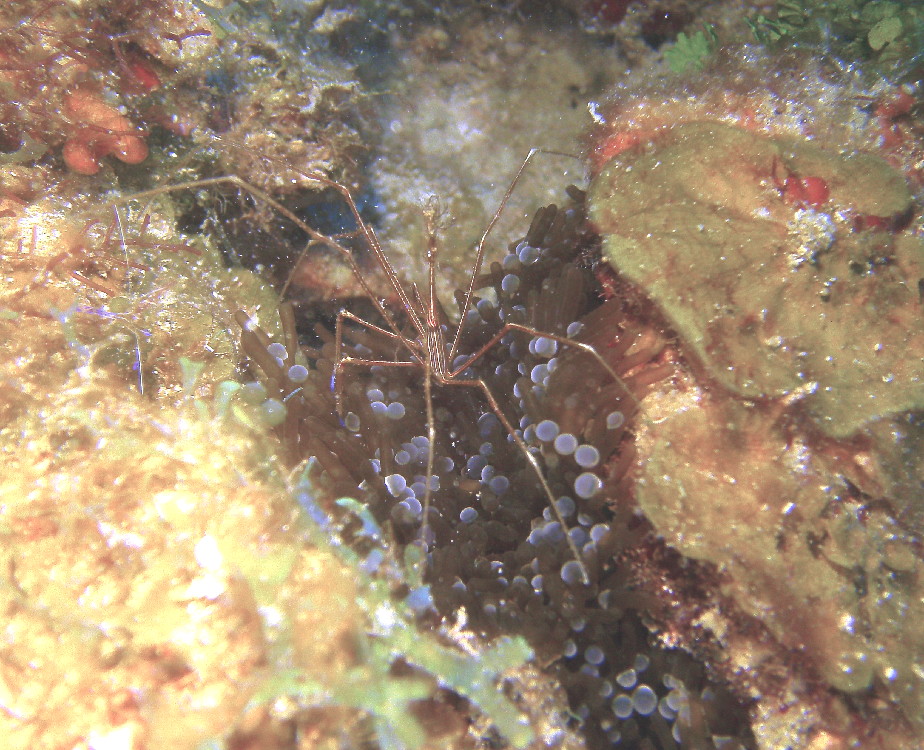
. . . just as clownfish do in the Pacific.
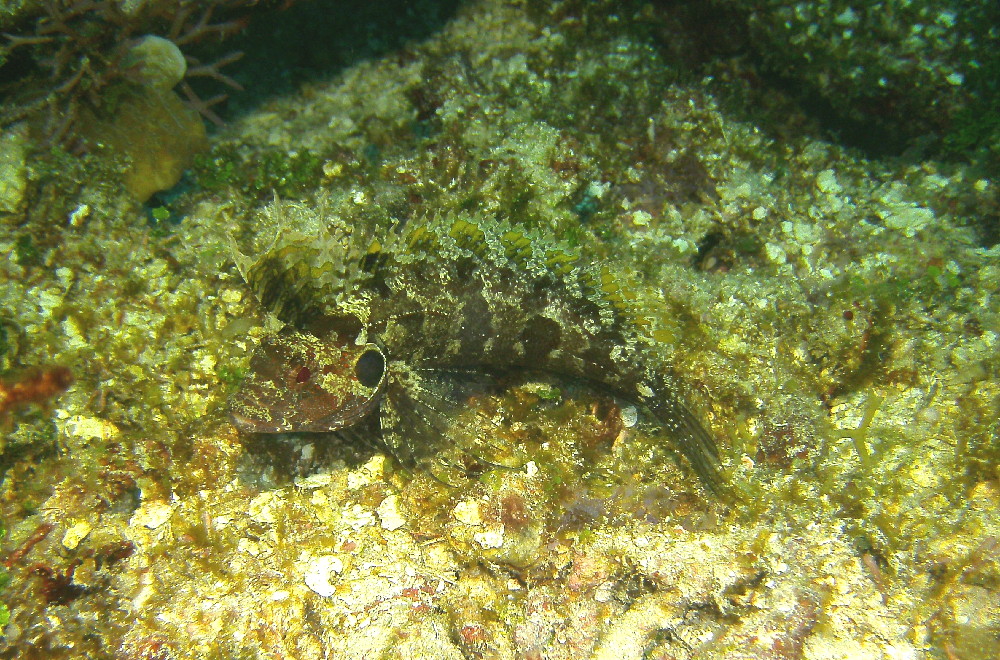
Quillfin blenny. Note how difficult it is to see.
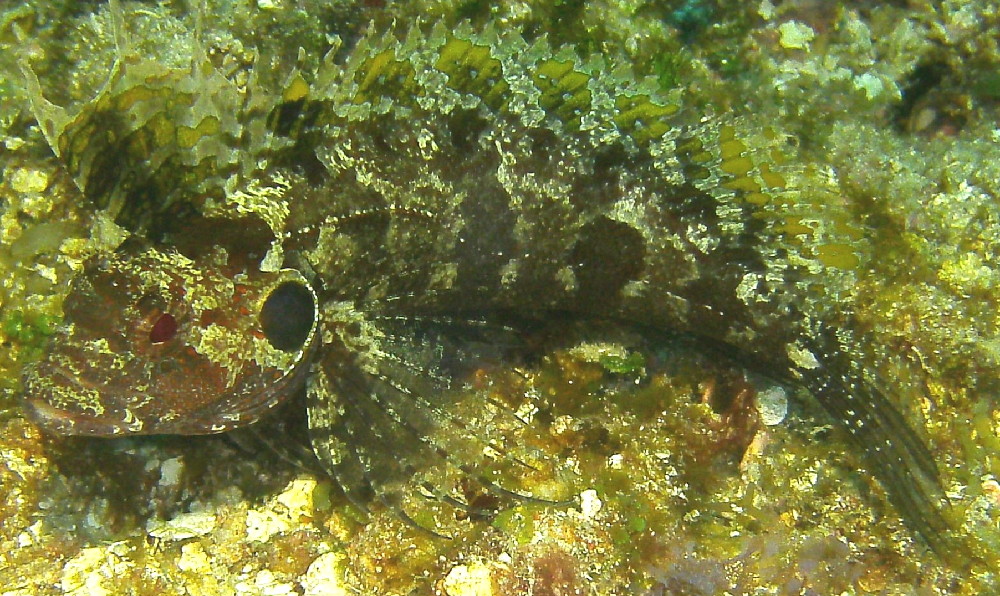
(Good thing Neal had cataract surgery last month!)
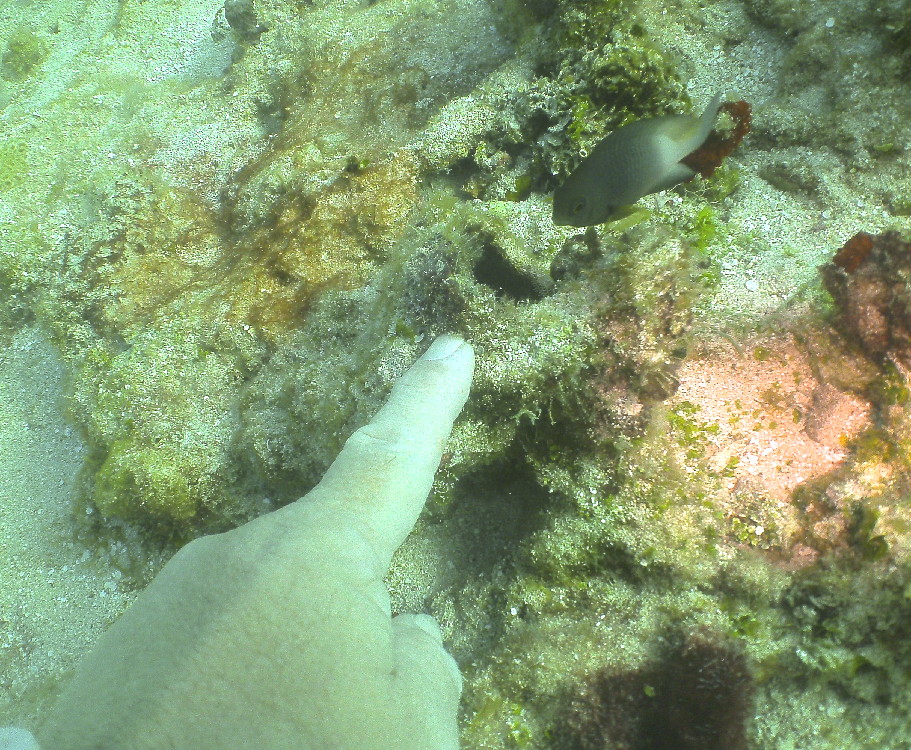
Having fun near the end of the dive teasing this Bicolor Damselfish.
They are fiercely territorial and protective of their algae farms, and/or egg hatchery.
Even though I must be 1000 times, it snapped at my finger to drive me away!
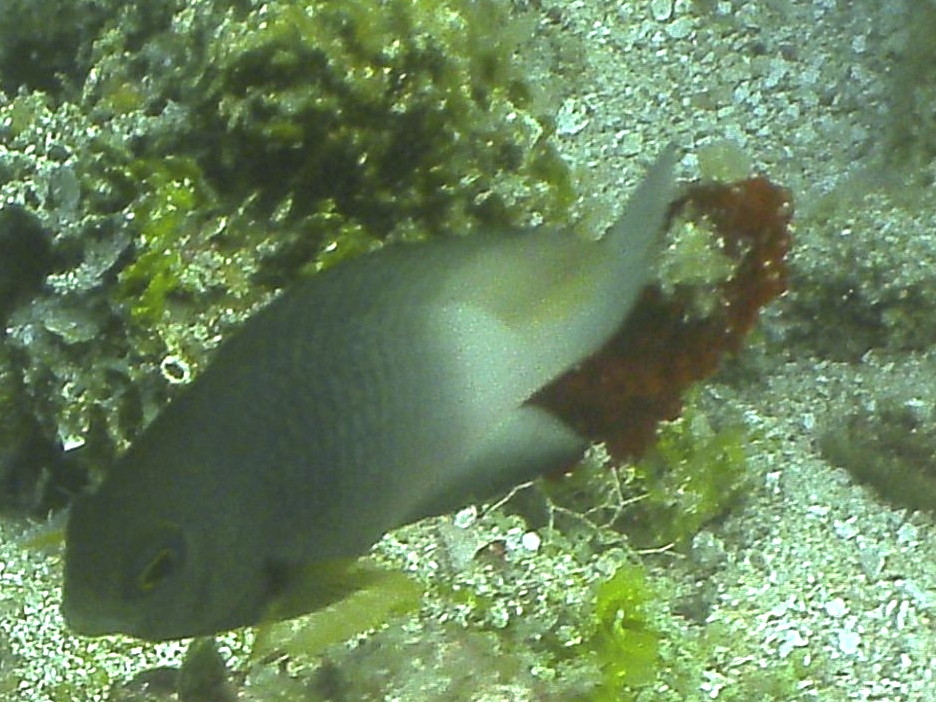
I didn't do this for long - a minute at most;
didn't want to stress it out (give it a heart attack).
| 